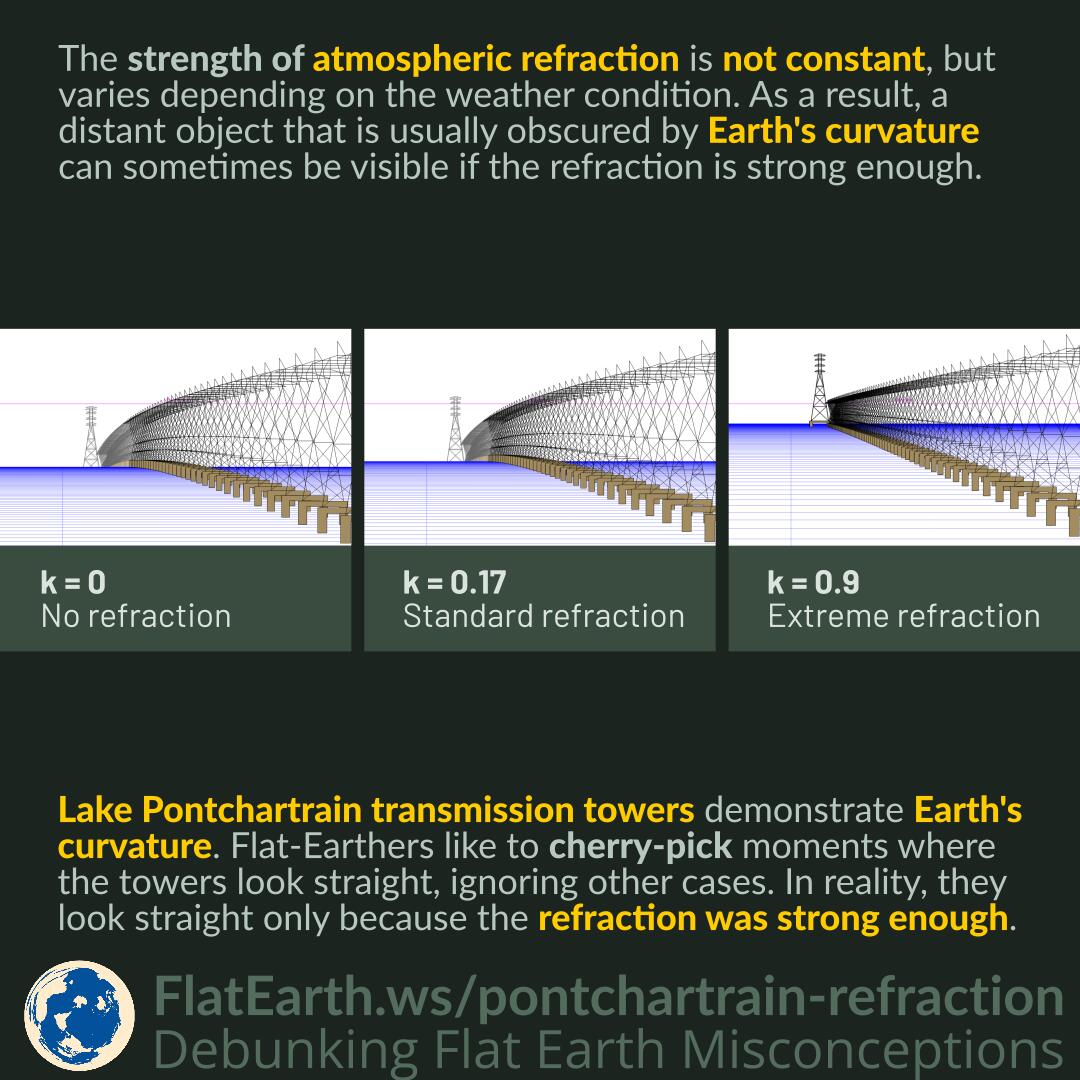The strength of atmospheric refraction is not constant but varies depending on the weather condition. As a result, a distant object usually obscured by Earth’s curvature can sometimes be visible if the refraction is strong enough.
Lake Pontchartrain transmission towers demonstrate Earth’s curvature. Flat-Earthers like to cherry-pick moments where the towers appear straight, ignoring other cases. In reality, they look straight only because the refraction was strong enough.
In the images that flat Earthers are showing, the transmission line appears straight, and they use the fact to dismiss all the other observations as fake. However, there is no reason to claim any of these observations as fake. The physics can explain all the observations, including those showing the curvature and those showing a straight line that flat-Earthers like to show us.
The magnitude of refraction is often expressed as the refraction coefficient (k). k = 0 means no refraction. k = 1 means the refraction bends light rays at the same rate as Earth’s curvature. k above 1 means the rays bend faster than Earth’s curvature. A negative k means the rays are bent in the other direction against Earth’s curvature. Some nominal values of k are 0.13, 0.143, or 0.17, which are used if the exact value of k is unknown or unimportant.
Extreme refraction usually means the layers of air are unstable and result in distorted or blurred images, which is precisely what happens in the images that flat-Earthers like to show us.
References
- Lake Pontchartrain Transmission Line – Here is the Curvature! – Walter Bislin
- Atmospheric refraction – Wikipedia
- Refraction – Finding the Curvature of the Earth – Walter Bislin


